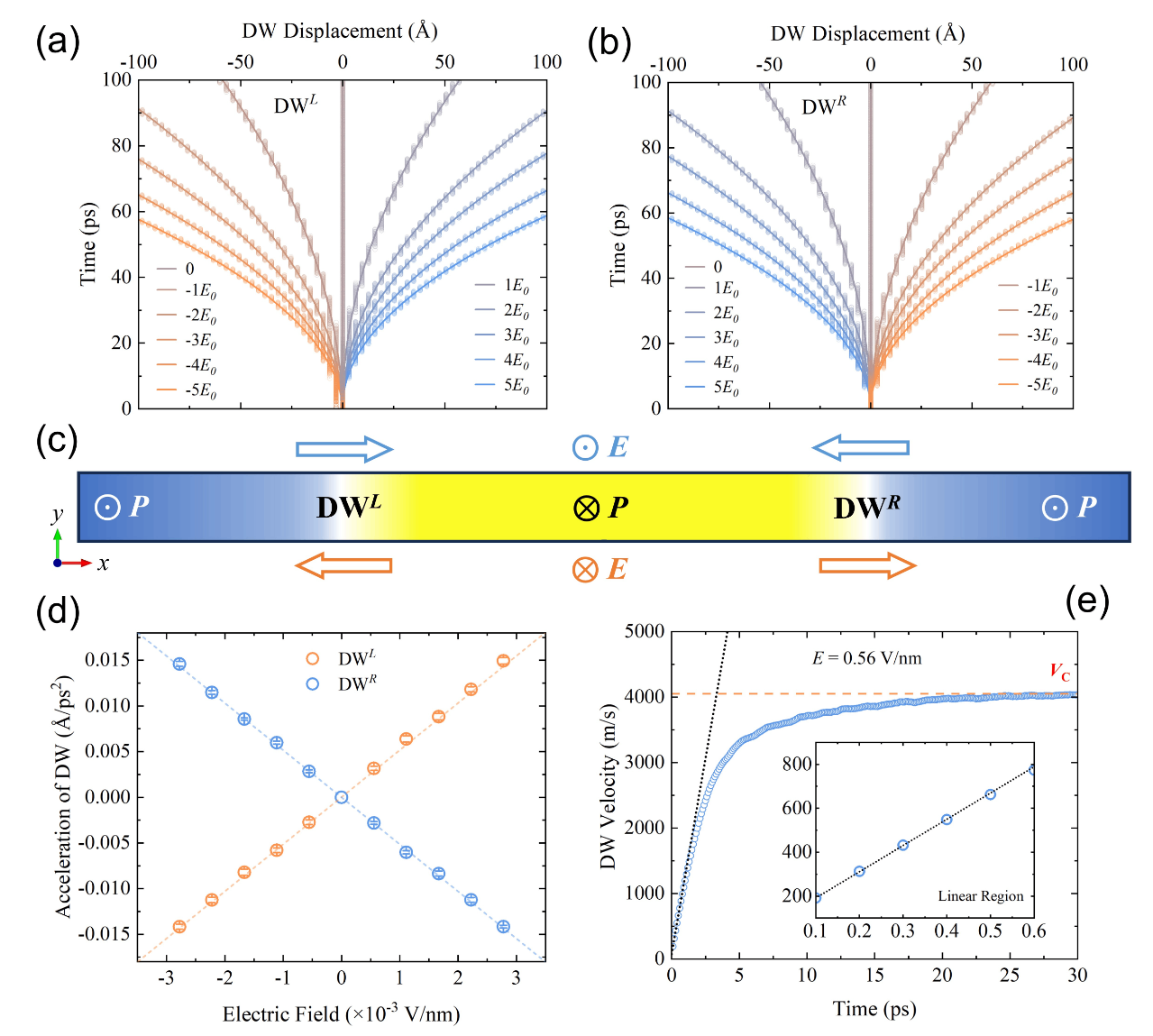What Can DP Do too? | Soliton domain wall inertial motion with ultra-low damping in sliding ferroelectrics

On July 21, 2025, a research paper by the Ningbo Institute of Materials Technology and Engineering, Chinese Academy of Sciences was published online in Phys. Rev. B, entitled "Soliton-like domain wall motion in sliding ferroelectrics with ultralow damping". The first authors of the paper are doctoral students Dr. Yubai Shi and Dr. Gaoxiang Yu. The corresponding authors are Associate Researcher He Ri and Professor Zhong Zhicheng. The paper was selected as Editors' Suggestion.
Ferroelectric materials have important applications in the fields of non-volatile data storage, neuromorphic computing, and signal sensing due to their switchable spontaneous polarization properties under an applied electric field. Recently, research based on van der Waals layered materials has proposed a new ferroelectric mechanism that is completely different from traditional ionic ferroelectrics: sliding ferroelectricity, that is, ferroelectric polarization reversal is achieved through interlayer sliding. The team and experimental collaborators previously used Deep Potential to demonstrate that this non-intrinsic ferroelectricity can exhibit ultrafast polarization reversal mechanics and excellent anti-fatigue properties [Science 385, 57-62 (2025); Acta Mater. 262, 119416 (2024)].
Recently, the authors theoretically studied the dynamic properties of domain walls in sliding ferroelectric 3R-MoS₂ by combining Deep Potential and field theory analysis. The research results show that, unlike the strong damping of traditional ferroelectric domain wall motion, the domain wall motion in sliding ferroelectrics exhibits ultra-low damping characteristics, which is consistent with the ultra-slip characteristics of domain walls observed in h-BN sliding ferroelectrics by the team of Liu Shi from Westlake University [published in PRL 135, 046201 (2025) on the same day], jointly proving that ultra-low damping domain wall motion is universal in sliding ferroelectric materials. Due to the ultra-low damping property, the sliding ferroelectric domain wall shows uniformly accelerated motion under an external field, so the sliding ferroelectric domain wall is a free soliton that follows Newton's second law. In addition, calculations show that the velocity of the bilayer MoS₂ domain wall can reach a relativistic-like limit (4000 m/s) under continuous external field driving, which is the group velocity of the in-plane transverse acoustic branch. More importantly, after removing the external field, the sliding ferroelectric domain wall maintains uniform inertial motion, which is completely different from the motion stopping observed in traditional ferroelectrics. This work provides a theoretical basis for the application of sliding ferroelectric domain walls in microelectronic devices (such as racetrack memories and neuromorphic devices).

Figure 1. (a) Stacking mode and sliding barrier of 3R-MoS₂ unit cell. (b) Polarization intensity change during unit cell sliding. (c) Static domain wall structure of 3R-MoS₂. The pink dots are the distribution of sliding distances in real space after atomic relaxation, and the blue solid line and green dashed line are the sliding distance and energy distribution fitted by the field theory model, respectively.

Figure 2. (a) Motion trajectories of left domain wall and (b) right domain wall in 3R-MoS₂ under different constant external electric fields. (c) Schematic diagram of domain wall motion in real space. (d) Acceleration of left and right domain walls under different constant external electric fields. The acceleration has a linear relationship with the field strength. (e) Domain wall velocity-time curve under high electric field, showing relativistic-like effects when the domain wall velocity is close to vc.

Figure 3. Motion trajectories of domain walls in 3R-MoS₂ at (a) 1 K and (b) 300 K, and (c) motion trajectories of domain walls in PbTiO₃ at 300 K, with the external electric field removed after 20 ps. (d) Evolution of domain wall velocities in 3R-MoS₂ and PbTiO₃. After removing the external electric field at 20 ps, the domain wall in MoS₂ can still maintain uniform inertial motion, while the domain wall in PbTiO₃ is stationary.